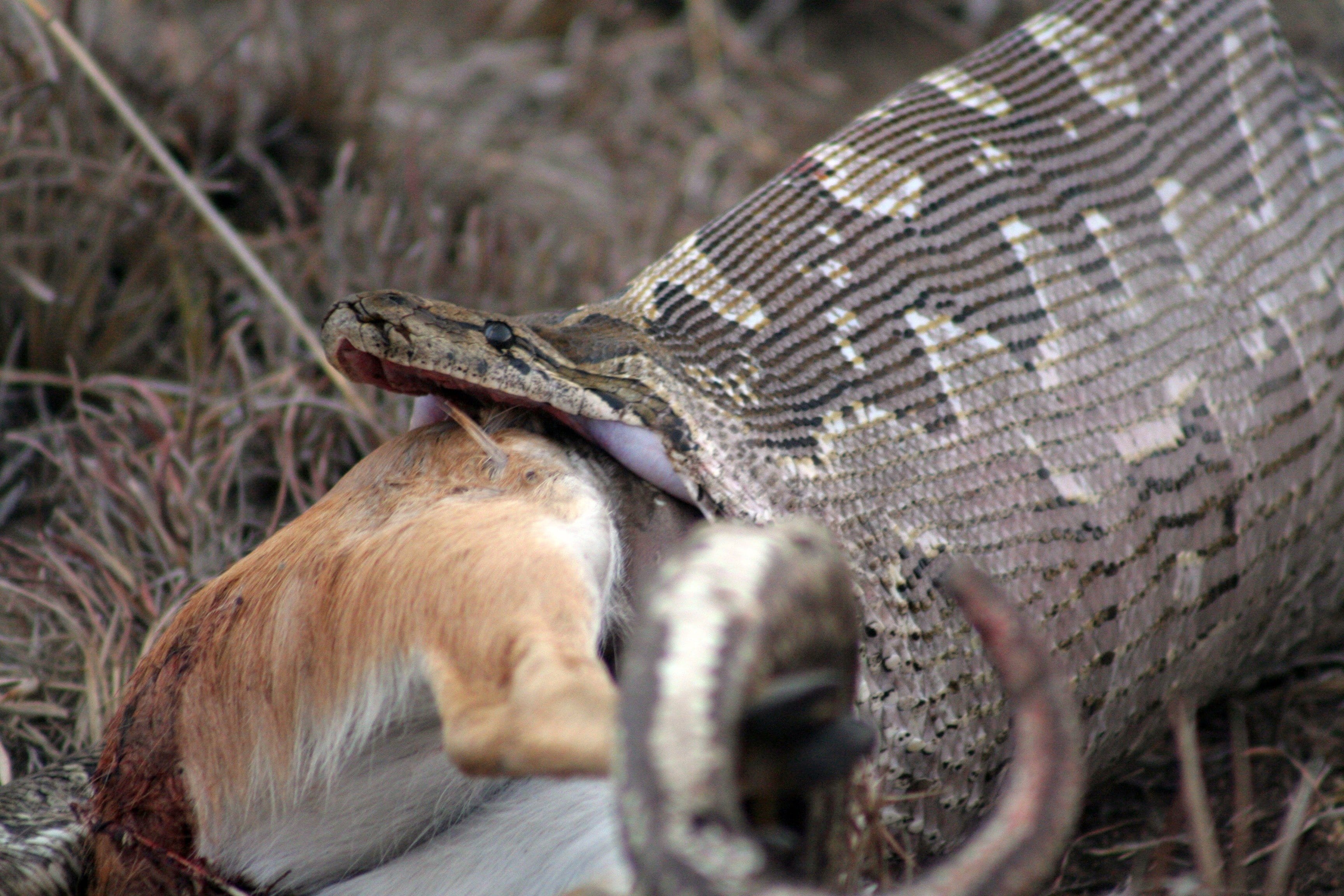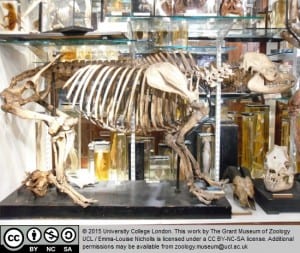Question of the Week: How do snakes poop?
By Arendse I Lund, on 9 November 2016
Sometimes kids ask the darndest things, and this week in the Grant Museum one kid asked me how do snakes poop? I didn’t know, and none of the books we consulted seemed to get to the bottom of this.

Juvenile carpet snake eating a cane toad (Photo: Andrew Mercer)
It turns out that a snake’s excretion process is highly variable from species to species. When a snake eats something—be it a mouse, deer, or hippo—it’s digested, and the gut extracts the nutrients. Poop consists of everything that couldn’t, for whatever reason, be extracted. Rat snakes defecate approximately every two days; bush vipers defecate every 3-7 days. A good rule of thumb is that if a snake eats frequently, it will defecate frequently. If a snake eats infrequently, it will defecate infrequently. Simple in theory, this means that a snake may defecate only a few times a year. (One snake was recorded holding it for 420 days!)
Because of this, up to 5-20% of a snake’s body weight at any given time may be fecal matter. In a human of 130 lbs, that would be 6.5-26 lbs of feces. If you think that number is incredible, it turns out that a snake eating a particularly large meal will potentially experience its body mass more than double!
How big a snake is and where it lives matters too. Scientists have found there to be a positive correlation between the ingestion to defecation period and the relative body mass of snake species. An arboreal snake will defecate soon after eating to maximize mobility; a terrestrial snake such as the Gaboon Viper, which lies still for days on end, doesn’t require the same speediness and doesn’t defecate as frequently. One theory suggests that holding onto its feces may help a snake as the increased size and weight could anchor it in attacks on larger and heavier animals. If the added weight becomes cumbersome, then the snake can simply dispel it. (Please don’t try this at home.)

An African Rock Python eating an antelope (Photo: Alex Griffiths)
So in the end, where does it all go? Once the meal is reduced to poop, the snake can get rid of it through an anal opening, or cloaca, which is Latin for ‘sewer.’ This opening can be found at the end of a snake’s belly and beginning of its tail; unsurprisingly, the feces are the same width as the snake’s body. A snake will use the same opening to defecate, urinate, mate, and lay eggs—now that’s multi-purpose!
Follow Arendse Lund on Twitter
 Close
Close























